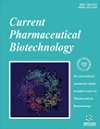
Full text loading...
We use cookies to track usage and preferences.I Understand
The truancy of representation of the estrogen, progesterone, and human epidermal growth factor receptors occurs during TNBC. TNBC is recognized for the upper reappearance and has a poorer diagnosis compared with rest breast cancer (BC) types. Presently, as such, no targeted therapy is approved for TNBC and treatment options are subjected to chemotherapy and surgery, which have high mortality rates. Hence, the current article focuses on the scenario of TNBC vital pathways and discusses the latest advances in TNBC treatment, including immune checkpoint inhibitors (ICIs), PARP suppressors, and cancer vaccines. Immunotherapy and ICIs, like PD 1 and PD L1 suppressors, displayed potential in clinical trials (CTs). These suppressors obstruct the mechanisms which allow tumor cells to evade the system thereby boosting the body’s defense against TNBC. Immunotherapy, either alone or combined with chemotherapy has demonstrated patient outcomes such as increased survival rates and reduced treatment-related side effects. Additionally, targeted therapy approaches include BRCA/2 mutation poly ribose polymerase inhibitors, Vascular Endothelial Growth Factor Receptor (VEGFR) inhibitors, Epidermal growth factor receptor inhibitors, Fibroblast growth factor inhibitors, Androgen Receptor inhibitors, PIK3/AKT/mTOR pathway inhibitors, Cyclin-dependent kinase (CDK) inhibitors, Notch signaling pathway inhibitors, Signal transducer and activator of transcription 3 (STAT3) signaling pathway inhibitors, Chimeric antigen receptor T (CAR-T) cell therapy, Transforming growth factor (TGF) -β inhibitors, Epigenetic modifications (EPM), Aurora Kinase inhibitors and antibody-drug conjugates. We also highlight ongoing clinical trials and potential future directions for TNBC therapy. Despite the challenges in treating TNBC, recent developments in understanding the molecular and immune characteristics of TNBC have opened up new opportunities for targeted therapies, which hold promise for improving outcomes in this aggressive disease.

Article metrics loading...

Full text loading...
References


Data & Media loading...

